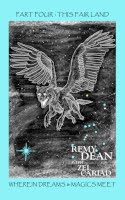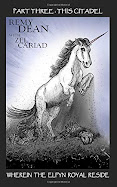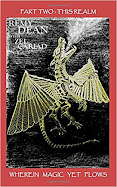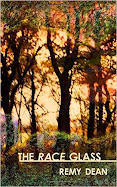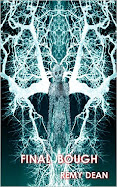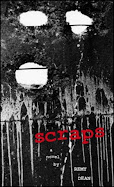In the artist’s statement for the exhibition, Processed Memory, I made the observation that the photograph has become synonymous with memory. Adverts often use photographs and the visual language of the photo album to imply personal histories and tales of recollection. Lately, our memories have become increasingly digitised. Ferb (of Phineas and Ferb) made the point that, “Fame is fleeting, but the internet is forever”. Increasingly, digital pictures are the way that we remember and store our memories of people and places.
Recently, a very good friend of mine e-mailed me some pictures from our college days that he was about to upload to his facebook page. I saw them and the memories came flooding back, my mind’s eye could rerun some of the events depicted in crystal clarity including details of dialogue and gesture, but also there were a few people and places that I had no response to… Who? Where? Not a clue. (Perhaps if one can fully remember their student times, then they were not doing it properly! A bit like the 60s.) The point I am getting at, here and now, is that our culture is increasingly remembering more and more through stored images, or more exactly we are experiencing digitally and then storing digitally – occasionally sharing digitally – and perhaps our individual, organic engagements with these events are less deep and the memories less fixed in our actual substance – the ‘eye’ bypasses the ‘I’ and feeds directly into the ‘i-’. Are we becoming careless with our memories? (Was that a Duran Duran song?)
In the olden days, the photograph was a valuable thing. A film could hold 24 or 36 exposures before you had to take it to the chemist for processing, or – if you were an audio-visual student, professional photographer or hobbyist – unravel the spool in total darkness and work alchemy to develop the ribbon of film itself and then make prints from it. Each frame actually cost money, and the effort and organisation involved in retrieving those images added to their value. Because of these constraints, the taking of each photograph was a deliberate choice. The act of considering, deciding and taking the photo had already fixed the people and places in memory. The shared experience of shuffling through the pack of processed pictures with friends, or laying out a photo album to show to others, taking time to select the best and discard the boring… this was all part of a ritual of remembering. It made photographs more meaningful.
Now, we upload vast amounts of photos to ‘streams’ and ‘buckets’, fill gigabytes of hard-drive with stored images, we ‘tweet’, we ‘instagram’… teenagers, and ‘agers' in general, 'selfie' all day long and lean close to friends to pout at a tiny lens and… well, that’s that. Our culture is storing huge amounts of pictures in the form of visual data, pictures taken ‘in passing’ snapped almost at random then stored and at best glanced at once or twice… the majority of these pictures are never looked at again. Ever.
Who has the time to sift through thousands of pictures accrued over the last few years and do anything meaningful with them? When will we get round to selecting the best and discarding the boring? Sharing? “I just uploaded a picture onto facebook”, “check out my tumblr photostream”, “I just tweeted an instagram” – really? Well done. In the days of ‘proper’ photographs this would be the equivalent of pinning a picture to a tree in a forest – someone may even find it and slip it into their wallet to use later, just like some random stranger may download your most flattering ‘selfie’ to enjoy in their own particular way… is this now the measure of the value we place on our memories, and on ourselves?
Marshall McLuhan said that all media are extensions of some organic, human faculty and that photography is certainly an extension of the eye and the memory. New media is extending those faculties further still: this keyboard I am tapping on is an extension of my hands and my voice, this blog is a projection of my mind, the screen you are looking at is an extension of your eyes, the internet systems joining these faculties are extensions of the human brain. Or is that balance beginning to tip the other way?
These thoughts have been sparked off by seeing the work of three photographers who have really maintained the integrity and value of the medium. As creatives, their approaches are quite different – only really linked because they are important photographers and because I recently saw their work on the same day.
I discovered the work of Chino Otsuka via a tweet (look who’s talking, now!) and I quickly glanced at a selection of her images on-line… then I looked again, and again, each time for longer and longer. There was something truly poignant and poetic about her images that deliberately explored personal memory. The images were ‘haunting’. Though the places and events depicted were unlike anything from my own past, there was something that touched me deeply. It is difficult to put into words, as all successful art is… it was if I had just experienced her memories. The imagery struck a chord in me that resonated with my own experiences.
| Chino Otsuka: Photo Album |
| 100 postcards from Pidgin Snaps by Jonathan Meades |
I have not yet had sufficient time to absorb the collection in any depth, but a few really stand out on the first shuffle through. I appreciate the aesthetics of reflections that transform the surroundings into vibrant abstracts, distilling the essence of a place into colourful compositions. The ‘straight’ landscape photographs are also impressive, many with broody lighting that transform the familiar into dramatic, cinematic scenes.
One image shows a fence dividing a rugged hillside, something we may refer to as ‘countryside’. On one side of the fence the country is brown and rocky, on the other it is green and mossy. The land has become a record, a memory, of centuries of land management by two different owners. The weather, the soil, the climate, the longitude and latitude… none of these things have had a greater effect on the land than the actions of humans. It is a beautiful image with a profound subtext about our effect on the environment and reminds us that nearly all of the British countryside is artificial.
There is more about Pidgin Snaps here at the publisher's website.
Jonathan Meades has built a career out of seeing things differently – finding the extraordinary in the everyday and sharing his childlike wonder and keen intellect with us so we may also pause and look around us to find for ourselves the fascinating stories hidden in a local colloquialism or in the pattern of brickwork on a shop front façade… he is a polysemic-semantic-Romantic and an expert archaeologist of etymology… (!)
You can read my extensive Scrawl interview with Jonathan Meades here...
On the morning that these wonderful photographic memoires arrived, via our cheery rural postperson, we had to satisfy ourselves with a very brief ‘scan’ of their content before heading off to attend an arts workshop hosted by Tim Pugh and then take in the Tom Wood exhibition at Oriel Mostyn Gallery in Llandudno…
The work of Tom Wood is deceptively simple: seemingly straightforward photographs of people and places. He is prolific, and has been so for decades, diligently photographing his surroundings and the people he meets. The people in these fixed images have changed, or gone, yet here they are, as they were. Insignificant moments fixed as monuments to their humanity, with all its terrible faults, heroic failings and trifling triumphs. These people may have a starring role in their own life, but are not celebrities – they are individuals made significant by being singled out from the masses. We see their faces and feel we may have known them, somehow our own memories of friends, neighbours and relatives surface and intertwine with these strangers, yet all we are shown is their surface, on the surface of a print.
| Tom Wood is 'Photie Man' - an overview of his earlier works |
I once likened Tom Wood’s approach to that of a wildlife photographer: capturing naturalistic, un-posed pictures of the human animal in their habitats. Though he strongly resented those remarks, maintaining that he respects his subjects and often builds relationships with them that have spanned decades, I still had that (to me, positive) impression at the Mostyn’s current exhibition titled, Tom Wood: Landscapes. Tom is a ‘people person’ so we see quite a few townscapes and farmscapes – most of which are inhabited.
The photographs of abandoned interiors are amongst my personal favourites. The people were long gone, but we saw the space where they had lived. We were looking into what had once been personal spaces, reading an implied narrative of families growing and declining, times changing for better or worse… Those crumbling, cluttered rooms had borne witness to comings and goings, births and deaths. They were relics of lives lived with their measures of happiness… perhaps some deep sadness. Now they were preserved in the museum of the photographic image and their stories, real or imagined, could touch our own.
Otsuka, Meades and Wood all manage to make the mundane magical: Otsuka takes moments remembered from her own childhood and makes them resonate with our private memories – the minutiae become mythic; Meades transforms the familiar into wonderland stage sets – things we may walk past everyday become arresting and intriguing documents of our past; Wood allows us to take a longer look at things we may otherwise simply glance at, introduces people we would dismiss as ‘ordinary’ – he curates a museum of memories that catalogues people and places who could easily be forgotten… stories, theirs and ours, may have more in common than we first suspect.
Look longer at the moment, for the past remains present.
More photos were taken in the past 12 months than in the rest of history as our lives are increasingly digitised http://t.co/Ki7fLUrR70
— BBC World Service (@bbcworldservice) February 8, 2014


.jpg)
